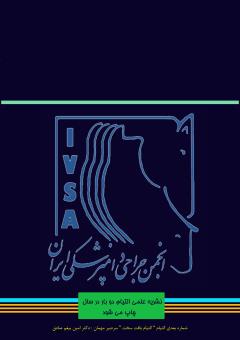Local anethetic techniques of distal limbs in cattle
Subject Areas : Veterinary Soft and Hard Tissue Surgery
mohammad ali sadeghi
1
![]() ,
Samaneh Ghasemi
2
*
,
Samaneh Ghasemi
2
*
![]()
1 - Department of Clinical Science, Faculty of Veterinary Medicine, Ferdowsi University of Mashhad, Mashhad, Iran
2 -
Keywords: Limb, Local anesthesia, Cattle,
Abstract :
Cattle usually tolerate physical restraint so, many surgical or therapeutic techniques including limbs procedures can be performed by using a combination of mild sedation and local or reginal anesthesia. These techniques avoid the risk of general anesthetic and are relatively simple and inexpensive with low side effects. Local or reginal anesthesia involve the local anesthetic drug that provide the absence of sensation in a region of body. Use of appropriate of local anesthesia is an important tool to perform different therapeutic and surgical procedures in limbs of cattle. It is important that local anesthesia provides sufficient analgesia for pain management. Lidocaine is the most common local anesthetic drug used in cattle. Before injection, the skin should be cleaned to reduce the chance of introducing pathogens. There are several techniques of local and reginal anesthesia including nerve block, ring block, four-point and, intravenous regional anesthesia for distal limbs in cattle. In nerve block, an anesthetic drug injects near specific nerves while ring block performs by injection of an anesthetic drug circumferentially around the mid-metacarpus or metacarpus region. In low four-point block, local anesthetic drug is injected in four sites to anesthetize the lower limb from pastern distally. During intravenous regional anesthesia, an anesthetic drug is intravenously injected by a catheter followed by the placement of a tourniquet around the limb. Consideration to the volume of used local anesthetic drug is necessary for prevention of toxic effect of these drugs. In this article, the most common local anesthetic techniques of the distal limbs in cattle are described.
1. Mansour M, Wilhite R, Rowe J. Guide to ruminant anatomy: dissection and clinical aspects: John Wiley & Sons; 2017.
2. Tranquilli WJ, Thurmon JC, Grimm KA. Lumb and Jones' veterinary anesthesia and analgesia: John Wiley & Sons; 2013.
3. Grimm KA, Lamont LA, Tranquilli WJ, Greene SA, Robertson SA. Veterinary anesthesia and analgesia: John Wiley & Sons; 2015.
4. Clarke KW, Trim CM. Veterinary anaesthesia e-book: Elsevier Health Sciences; 2013.
5. Fubini SL, Ducharme N. Farm animal surgery-e-book: Elsevier health sciences; 2016.
6. Estebe J-P, Davies JM, Richebe P. The pneumatic tourniquet: mechanical, ischaemia–reperfusion and systemic effects. European Journal of Anaesthesiology 2011;28(6):404-411.
7. Bell N, Mahendran S. Local anaesthesia and analgesia guidance for surgical treatment of cows with necrotic hoof lesions. Livestock. 2017;22(6):298-304.
8. Lin H, Passler T, Clark-Price S. Farm animal anesthesia: cattle, small ruminants, camelids, and pigs: John Wiley & Sons; 2022.
9. Kruse H, Christensen KP, Møller AM, Gögenur I. Tourniquet use during ankle surgery leads to increased postoperative opioid use. Journal of Clinical Anesthesia. 2015;27(5):380-384.
10. Adams HR. Veterinary pharmacology and therapeutics: Iowa state university press; 2001.
11. Lin H, Passler T, Clark-Price S. Farm animal anesthesia: cattle, small ruminants, camelids, and pigs: John Wiley & Sons; 2022. 12. Klenerman L. Tourniquet time-how long? Hand. 1980(3):231-234.

